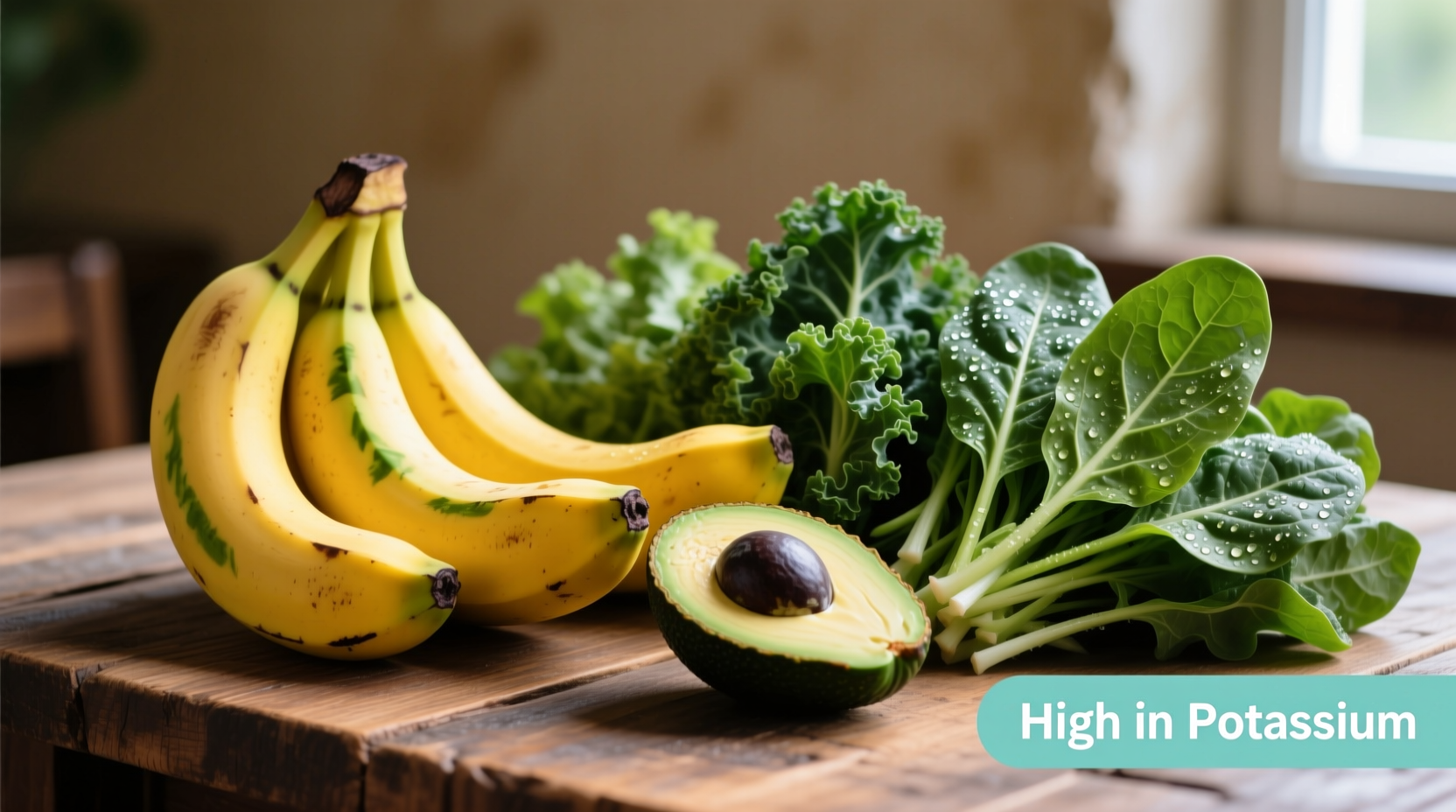Discover 15 top potassium-rich foods with precise amounts per serving: sweet potatoes (694mg/cup), white beans (1,005mg/cup), spinach (839mg/cup), avocados (708mg/whole), and bananas (422mg/medium). Adults need 2,600-3,400mg daily depending on age and gender for optimal heart and muscle function.
Understanding which foods contain potassium is essential for maintaining proper heart function, muscle contractions, and fluid balance. This comprehensive guide delivers scientifically verified information about dietary potassium sources, helping you make informed choices for better health. Whether you're managing blood pressure or simply optimizing your nutrition, knowing exactly how much potassium different foods provide empowers you to meet your daily requirements effectively.
Why Potassium Matters for Your Health
Potassium serves as a critical electrolyte that helps regulate fluid balance, muscle contractions, and nerve signals. According to the National Institutes of Health, adequate potassium intake is associated with reduced risk of stroke, lower blood pressure, and decreased bone loss. Most adults require 2,600-3,400mg daily, though individual needs vary based on age, gender, and health conditions.
Top Food Sources of Potassium by Category
These values come from the USDA FoodData Central database (2023), representing standard serving sizes with verified potassium content:
| Food | Serving Size | Potassium (mg) | % Daily Value |
|---|---|---|---|
| White beans (cannellini) | 1 cup cooked | 1,005 | 22% |
| Sweet potato | 1 cup mashed | 694 | 15% |
| Spinach (cooked) | 1 cup | 839 | 18% |
| Avocado | 1 whole medium | 708 | 15% |
| Salmon | 3 oz cooked | 534 | 11% |
| Plain yogurt | 1 cup | 573 | 12% |
| Banana | 1 medium | 422 | 9% |
| Coconut water | 1 cup | 600 | 13% |
Daily Potassium Requirements Across Life Stages
The National Academies of Sciences, Engineering, and Medicine established these daily potassium intake guidelines based on extensive research into cardiovascular health and electrolyte balance:
- Adults (19-50 years): 2,600mg (women), 3,400mg (men)
- Adults (51+ years): 2,600mg (women), 2,600mg (men)
- Pregnant women: 2,900mg
- Lactating women: 2,800mg
- Teenagers (14-18 years): 2,300-2,500mg
These values represent the Adequate Intake (AI) levels established when evidence isn't sufficient for a Recommended Dietary Allowance (RDA). Most Americans consume only about half the recommended amount, according to data from the Centers for Disease Control and Prevention.

Practical Ways to Increase Potassium Intake
Boosting your potassium consumption doesn't require drastic dietary changes. These evidence-based strategies make it simple to incorporate more potassium-rich foods into your daily routine:
Breakfast Solutions
Add sliced banana to your morning oatmeal (providing 422mg potassium) or blend spinach into smoothies (839mg per cup). A single avocado toast delivers nearly 15% of your daily potassium needs while providing healthy fats.
Lunch and Dinner Strategies
Substitute white potatoes with sweet potatoes in recipes (694mg per cup), which offer more potassium plus vitamin A. Incorporate white beans into salads or soups for a substantial potassium boost—just one cup provides over 20% of your daily requirement.
Smart Snacking Options
Choose coconut water (600mg per cup) instead of sugary sports drinks for hydration. A small handful of dried apricots (241mg per 5 halves) makes a convenient potassium-rich snack that's perfect for on-the-go nutrition.
Important Considerations for Specific Health Conditions
While potassium benefits most people, certain medical conditions require careful monitoring. Individuals with chronic kidney disease often need to limit potassium intake because damaged kidneys cannot effectively remove excess potassium from the blood. The National Kidney Foundation recommends that kidney disease patients work with their healthcare providers to determine appropriate potassium limits.
Conversely, people taking diuretic medications for hypertension may need increased potassium intake, as these medications can deplete potassium levels. Always consult your healthcare provider before making significant dietary changes, especially if you have underlying health conditions.
Debunking Common Potassium Myths
Many people believe bananas are the ultimate potassium source, but numerous foods actually contain more potassium per serving. One medium banana provides 422mg potassium, while a cup of cooked spinach delivers 839mg and a medium sweet potato offers 694mg. Understanding these relative potassium densities helps you make more strategic food choices.
Another misconception suggests that potassium supplements are necessary for most people. However, the American Heart Association emphasizes that potassium from whole foods is preferable to supplements for healthy individuals, as food sources provide additional beneficial nutrients and fiber.
Tracking Your Potassium Intake Effectively
Use these practical methods to monitor your daily potassium consumption without overwhelming complexity:
- Keep a simple food journal noting high-potassium items consumed
- Use free nutrition tracking apps that calculate potassium content
- Focus on incorporating at least 2-3 high-potassium foods at each meal
- Read nutrition labels carefully—potassium content is now required on U.S. labels
Remember that cooking methods affect potassium content. Boiling vegetables can leach potassium into water, while steaming or microwaving preserves more nutrients. When preparing potassium-rich foods, consider using cooking water in soups or sauces to retain those valuable nutrients.











 浙公网安备
33010002000092号
浙公网安备
33010002000092号 浙B2-20120091-4
浙B2-20120091-4